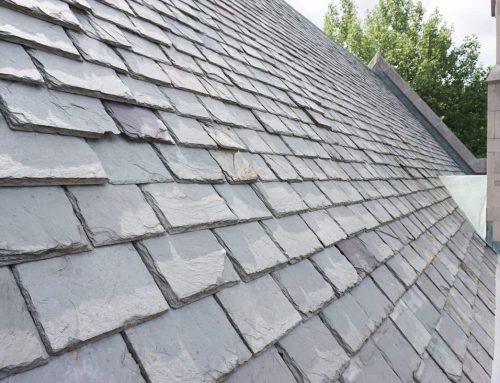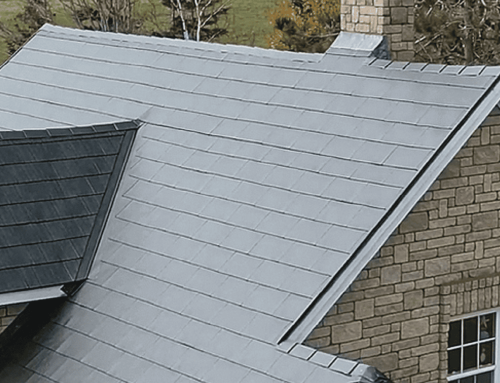Winter in Toronto arrives with little warning, transforming the city from autumn’s golden hues to a landscape of snow and ice that can persist for months. While residents bundle up in warm coats and switch to winter tires, many forget that their homes need similar preparation to weather the harsh Canadian winter. Your roof, serving as the primary barrier between your family and the elements, faces some of the most challenging conditions of the year during Toronto’s winter months.
The transition from fall to winter represents a critical period for roof maintenance. Toronto’s climate delivers a punishing combination of heavy snowfall, ice storms, freeze-thaw cycles, and bitter cold temperatures that can expose weaknesses in even well-maintained roofing systems. Snow loads can exceed 40 pounds per square foot during heavy accumulation periods, while ice dams can create water backup that infiltrates the most carefully constructed roof assemblies.
Preparing your roof for winter isn’t just about preventing immediate problems—it’s about protecting your entire home from water damage, maintaining energy efficiency, and avoiding costly emergency repairs during the season when roofing work becomes most difficult and expensive. Taking proactive steps in late fall can save thousands of dollars in damage and ensure your family stays warm and dry throughout Toronto’s demanding winter season.
Understanding Toronto’s Winter Roof Challenges
The Freeze-Thaw Cycle Impact
Toronto’s winter weather presents a unique set of challenges that distinguish it from many other Canadian cities. The city’s location on the shores of Lake Ontario creates a microclimate that can produce lake-effect snow, sudden temperature fluctuations, and ice storms that can devastate unprepared roofing systems.
The freeze-thaw cycle represents one of the most destructive forces affecting Toronto roofs. Daytime temperatures during winter can rise above freezing, causing snow and ice to melt, only to refreeze when temperatures drop after sunset. This constant expansion and contraction places tremendous stress on roofing materials, flashing systems, and gutters. Water that seeps into small cracks during the day can freeze overnight, expanding and creating larger fissures that compromise the roof’s integrity.
Snow Load Considerations
Snow accumulation in the GTA typically ranges from 100 to 150 centimeters annually, but this can vary significantly from year to year. The weight of accumulated snow becomes a critical factor, particularly when wet, heavy snow is followed by rain or freezing rain that adds additional weight to the roof structure. Older Toronto homes may not have been designed to handle the snow loads that current weather patterns can produce.
Ice Storm Threats
Ice storms present another serious threat to Toronto roofing systems. The infamous ice storm of 1998 demonstrated the devastating impact that ice accumulation can have on buildings throughout the region. Ice formation can add significant weight to roof structures while also creating conditions that allow water to penetrate areas that would normally shed moisture effectively.
Wind and Weather Patterns
Wind patterns around Toronto can create unique challenges for roofing systems. The city’s urban heat island effect combined with lake breezes can create wind conditions that drive snow and ice into areas where it wouldn’t normally accumulate. High winds during winter storms can also lift shingles and compromise flashing systems that have been weakened by cold temperatures.
Essential Fall Maintenance Tasks
Gutter and Downspout Preparation
The key to successful winter roof preparation begins with comprehensive fall maintenance tasks that address potential problems before they become serious issues. These tasks should ideally be completed before Toronto’s first significant snowfall, which can occur as early as November.
Gutter and downspout cleaning represents the most critical fall maintenance task for Toronto homeowners. The city’s abundant tree canopy means that gutters can become heavily clogged with leaves, twigs, and organic debris throughout the fall season. Clogged gutters prevent proper drainage and create conditions that lead to ice dam formation during winter months. All gutters should be thoroughly cleaned and flushed with water to ensure proper flow. Downspouts should be checked for clogs and proper drainage away from the foundation.
Roof Surface Maintenance
Roof surface inspection and cleaning are equally important. Debris such as leaves, branches, and organic matter can trap moisture against roofing materials and create conditions for premature deterioration. Areas where debris accumulates, such as valleys and behind chimneys, should receive particular attention. Moss and algae growth should be addressed, as these organisms can retain moisture and accelerate material degradation during freeze-thaw cycles.
Shingle Assessment
Shingle inspection should focus on identifying loose, damaged, or missing shingles that could allow water infiltration during winter storms. Toronto’s fall windstorms can loosen shingles that appeared secure during calmer weather, and addressing these issues before winter prevents more extensive damage during harsh weather conditions.
Tree and Landscape Management
Tree maintenance around the home is often overlooked but critically important. Overhanging branches can break under snow and ice loads, potentially damaging the roof and creating entry points for water. Dead or diseased trees near the home should be evaluated by a certified arborist, as these pose significant risks during winter storms. Even healthy trees may need pruning to prevent branches from contacting the roof during high winds.
Attic Ventilation and Insulation Check
Attic inspection provides insight into the overall health of the roofing system. Signs of water infiltration, inadequate insulation, or poor ventilation can indicate problems that will worsen during winter conditions. The attic inspection should include checking for proper insulation levels, which help prevent ice dam formation by maintaining consistent roof temperatures.
Critical Inspection Areas and Warning Signs
Flashing System Evaluation
Certain areas of Toronto roofing systems require special attention during pre-winter inspections due to their vulnerability to winter weather conditions. Understanding these critical areas and knowing what warning signs to look for can help homeowners identify problems before they become serious.
Flashing systems around chimneys, vents, and roof penetrations are particularly vulnerable to winter weather damage. These areas should be carefully inspected for signs of separation, corrosion, or damage. In Toronto’s older neighborhoods, many homes have large masonry chimneys that require extensive flashing systems. The mortar joints around chimneys should be checked for deterioration, as damaged mortar can allow water to penetrate behind flashing systems.
Roof Edge and Eave Assessment
Roof edges and eaves require special attention because ice dams most commonly form in these areas. The condition of drip edge flashing, fascia boards, and soffit materials should be evaluated. Signs of water damage or ice damage from previous winters can indicate areas that are vulnerable to future problems. Proper attic ventilation at the eaves is critical for preventing ice dam formation.
Valley Inspection
Valley areas where two roof planes meet channel significant amounts of water and are prone to ice accumulation during winter months. Both open and closed valley systems should be inspected for proper installation and signs of wear. Metal valley flashing should be checked for corrosion or separation, while shingled valleys should be examined for accelerated wear patterns.
Skylight and Roof Window Checks
Skylights and roof windows present unique challenges during Toronto winters due to their thermal properties and complex flashing requirements. The flashing around these features should be carefully inspected, and the condition of any snow guards or ice retention systems should be evaluated. Condensation problems around skylights during previous winters can indicate sealing or insulation issues that need attention.
Drainage System Evaluation
Gutters and downspouts should be inspected not just for cleanliness but also for proper slope, secure attachment, and adequate capacity. Sagging gutters or loose downspouts can fail under the weight of ice and snow, potentially causing damage to the roof edge and building exterior. The connection points where gutters attach to fascia boards are particularly vulnerable to failure during winter conditions.
Professional Maintenance and Repair Services
Safety and Expertise Considerations
While homeowners can perform many basic maintenance tasks, certain aspects of winter roof preparation require professional expertise and equipment. Understanding when to call in professional roof repair contractors can prevent safety hazards and ensure that critical work is completed properly.
Safety considerations make professional services essential for many maintenance tasks. Toronto’s fall weather can create slippery conditions on roofing surfaces, and the consequences of falls can be severe. Professional roofing contractors have the training, equipment, and insurance necessary to work safely on roof surfaces under challenging conditions.
Structural Assessment Services
Structural assessments require professional expertise to evaluate the load-bearing capacity of older roof structures. Many Toronto homes built before modern building codes may have structural limitations that become apparent only under professional evaluation. Contractors can assess whether additional support is needed to handle anticipated snow loads and identify potential problems before they become critical.
Complex Repair Requirements
Complex flashing repairs around chimneys, dormers, and other roof features often require specialized knowledge and materials. Professional contractors understand the proper techniques for installing and repairing flashing systems that will withstand Toronto’s harsh winter conditions. They also have access to commercial-grade materials that may not be available to homeowners.
System Upgrades and Improvements
Gutter and downspout systems may require professional attention if they need realignment, replacement, or upgrading to handle increased capacity requirements. Professional contractors can evaluate whether existing gutter systems are adequate for current roof areas and local precipitation patterns.
Emergency Planning and Insurance
Emergency preparedness planning should include establishing relationships with reputable local contractors before problems occur. During winter storms, qualified contractors are in high demand, and having established relationships can ensure faster response times when urgent repairs are needed. Insurance considerations may also favor professional maintenance and repairs, as many policies have specific requirements regarding roof maintenance.
Recognizing When Professional Help Is Needed
Structural Warning Signs
Even with diligent maintenance efforts, certain warning signs indicate that professional intervention is necessary to properly prepare a roof for Toronto’s winter conditions. Recognizing these signs early can prevent more serious problems and potentially dangerous situations.
Visible structural issues such as sagging roof lines, uneven surfaces, or obvious damage to roof framing require immediate professional attention. These problems can worsen rapidly under snow loads and may pose safety hazards to occupants. Toronto’s building codes have specific requirements for structural integrity, and professional evaluation may be necessary to ensure compliance.
Moisture and Water Damage Indicators
Persistent moisture problems in attic spaces or interior areas of the home often indicate roofing system failures that require professional diagnosis and repair. These problems can worsen significantly during winter months when ice dams and snow accumulation create additional water infiltration opportunities.
Widespread Material Deterioration
Multiple missing or damaged shingles suggest systemic problems that may require professional assessment of the entire roofing system. While isolated shingle damage can often be addressed with simple repairs, widespread problems may indicate that the roof is approaching the end of its useful life.
Historical Ice Dam Issues
Previous ice dam damage should be professionally evaluated to determine whether underlying problems have been properly addressed. Ice dams often cause damage that isn’t immediately visible, and professional contractors can assess whether additional work is needed to prevent recurrence.
Age-Related Concerns
Age-related concerns become more critical as roofing systems approach their expected service life. Most asphalt shingle roofs in Toronto have a lifespan of 20 to 25 years, and professional evaluation becomes increasingly important as systems age. Professional contractors can assess remaining life expectancy and help homeowners plan for eventual replacement.
Complex System Problems
Complex drainage issues that affect multiple components of the roofing system may require professional solutions that address underlying design or installation problems. These issues often involve coordination between roofing, gutters, and site drainage that requires professional expertise.
Emergency Preparedness and Winter Planning
Creating Emergency Response Plans
Winter weather in Toronto can be unpredictable, and even well-prepared homes may face unexpected challenges during severe weather events. Having plans and resources in place for emergency situations can minimize damage and ensure quick response when problems occur.
Emergency contact information for qualified roofing contractors should be readily available to all household members. During major weather events, contractors may be overwhelmed with service calls, so having multiple contacts and understanding their emergency service policies can be valuable.
Temporary Protection Measures
Temporary repair materials and techniques can help minimize damage while waiting for professional repairs. Basic materials such as tarps, roofing cement, and temporary fasteners can help seal minor leaks until permanent repairs can be made. However, safety should always be the primary concern, and temporary repairs should only be attempted when conditions are safe.
Interior Damage Prevention
Interior protection measures can help minimize damage if roof leaks do occur. Knowing how to safely collect water from leaks, protect furniture and belongings, and document damage for insurance purposes can save money and reduce stress during emergency situations.
Conclusion
Toronto’s harsh winter conditions demand proactive roof preparation to protect your home and family. From understanding the unique challenges posed by freeze-thaw cycles and heavy snow loads to completing essential maintenance tasks and recognizing when professional help is needed, proper preparation is your best defense against costly winter damage.
Don’t wait until the first snowfall to address your roof’s winter readiness. The time to act is now, while weather conditions still allow for safe and effective maintenance work. Whether your roof needs basic cleaning and inspection or more comprehensive repairs and upgrades, taking action before winter arrives can save you thousands of dollars in emergency repairs and water damage.
Ready to ensure your roof is winter-ready? Contact Ontario Downspout Service today to schedule your pre-winter roof inspection. As a 10-time “Best of HomeStars” award winner with thousands of successful projects throughout the GTA, we have the expertise and local knowledge to prepare your roof for whatever Toronto’s winter brings. Our comprehensive inspection services will identify potential problems before they become costly emergencies, giving you peace of mind throughout the winter season.
Don’t let winter catch you unprepared—contact Ontario Downspout Service now and protect your home with professional roof preparation services.








